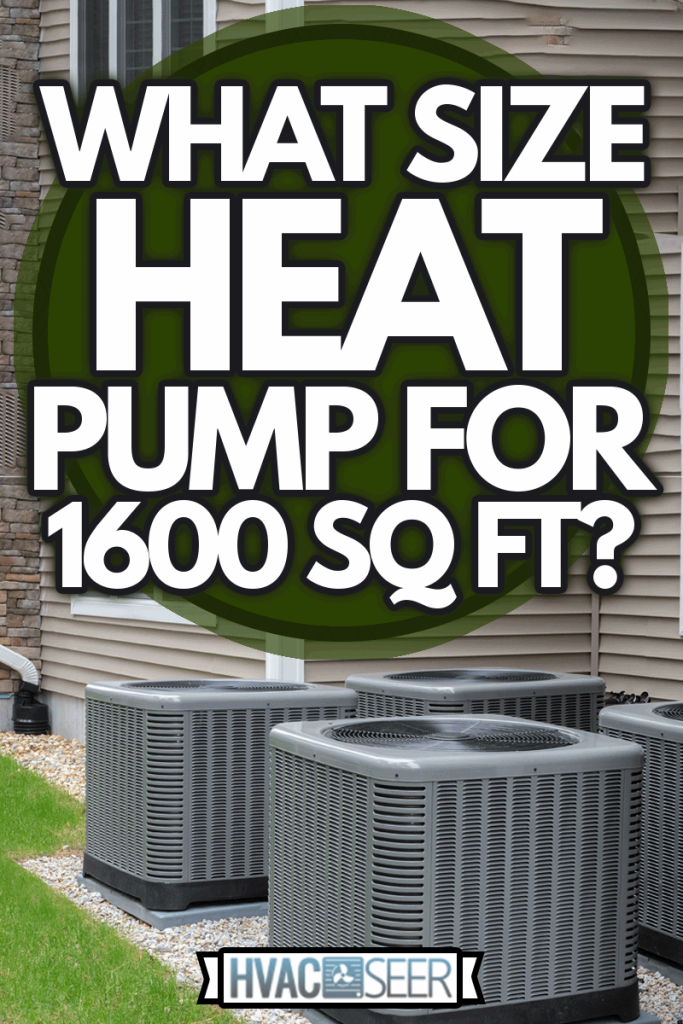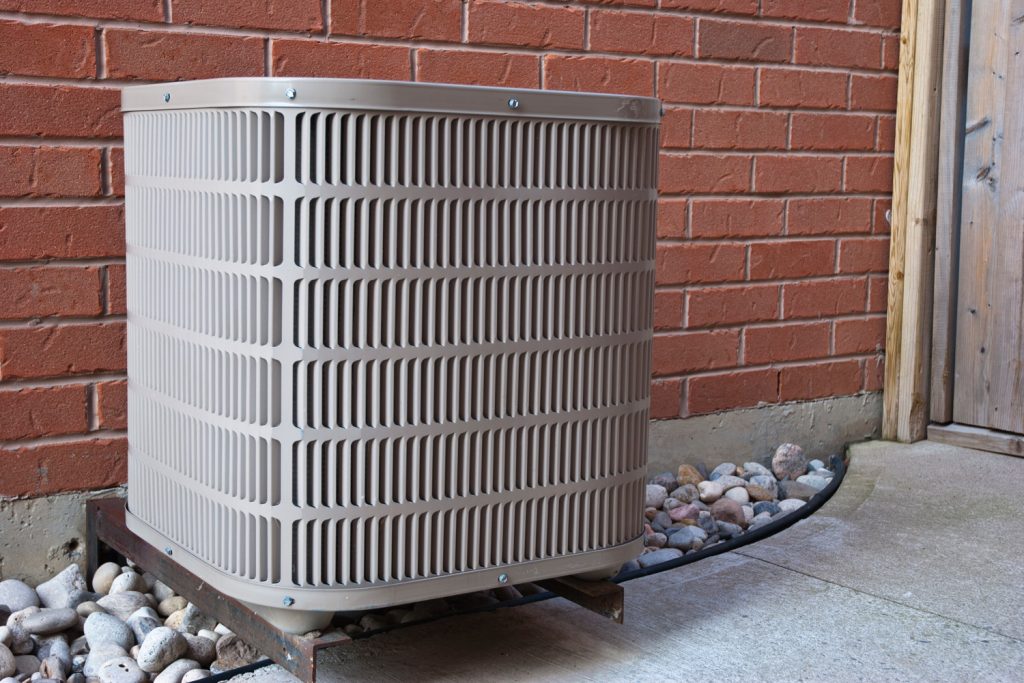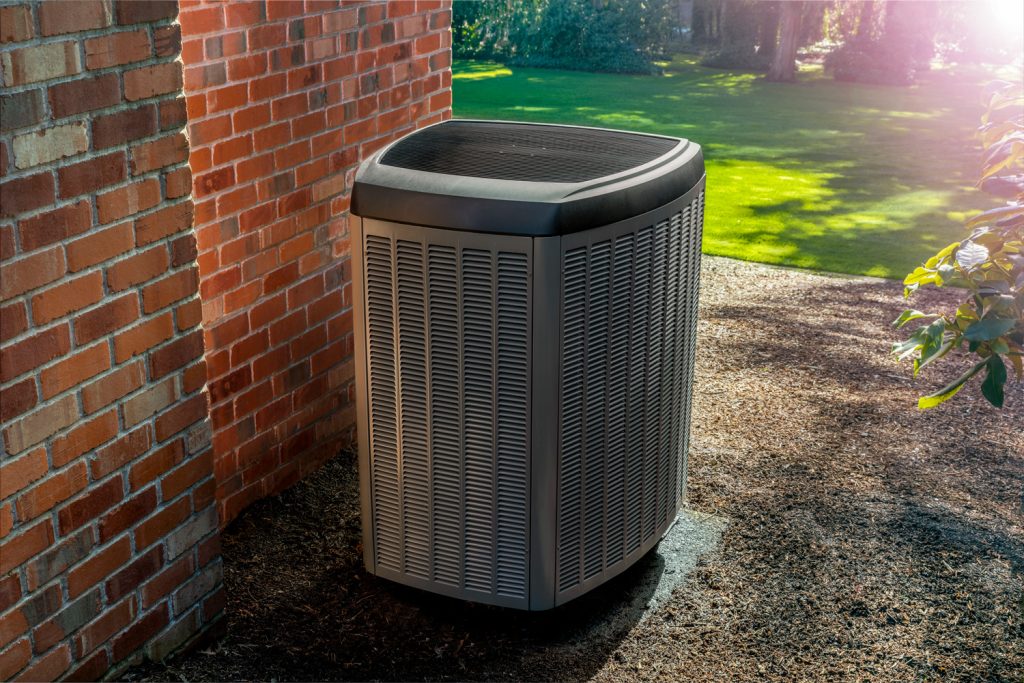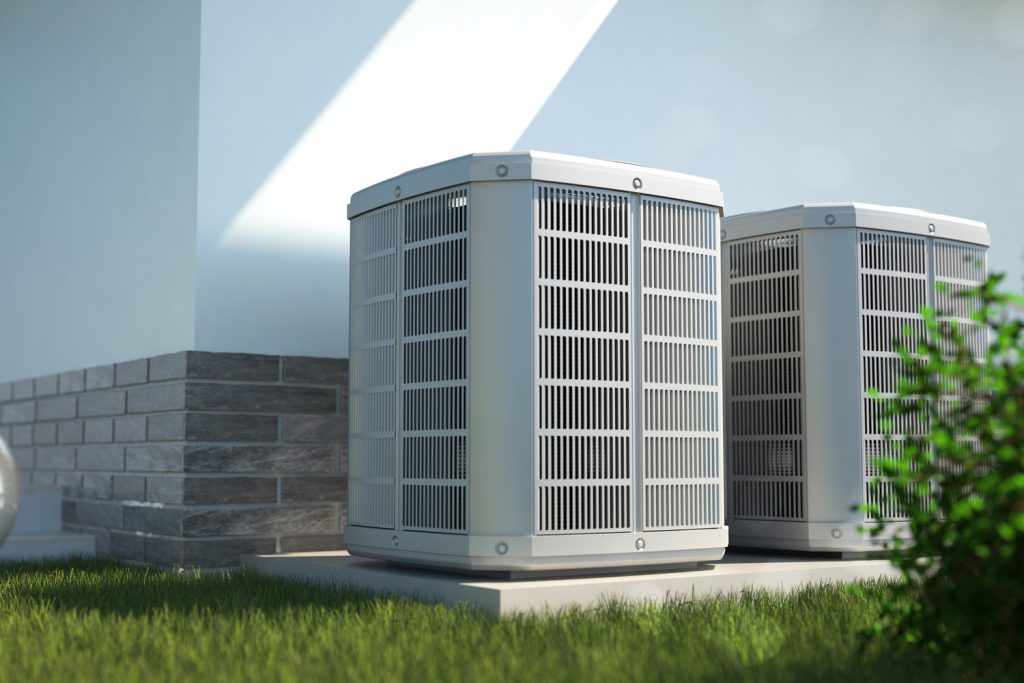Are you looking for a heat pump but don't know what the right match for your 1,600 square foot area is? Ponder no more because we have already researched the answer for you.
For 1,600 square feet of floor area, you need a heat pump with 4 tons of capacity. This size allows your heat pump to operate efficiently because it's the proper size for this specific square footage area.
When you know how to compute the capacity for a heat pump, you'll know the proper size that you need. So, we've included the calculation to help you determine the size. Please keep reading to learn more.

How to Determine Heat Pump Sizes
Manual J
The Manual J calculation can help determine the proper size for a new heat pump unit in a building. HVAC designers and contractors use the Manual J calculation for every building they work on.
Ensure you can determine the appropriate heat pump to install; here are the steps to perform a Manual J calculation:
1. Measure the Building's Square Footage

Determine the size of the structure you're working in. If you have access to the blueprints for the building, you may be able to find this information there. Otherwise, you can calculate the square footage of each room in the building by calculating its area and then adding all of your results together.
You can subtract any building areas that don't require heating or cooling, such as the garage or basement.
2. Examine the Structure's Insulation
Examine the types of insulation used in the structure. Insulation material installed in walls, floors, or ceilings is one example, which contractors can usually tell from blueprints or construction plans. Contractors consider external factors like window size and placement, sun exposure, and airtightness when determining how effective a building's insulation is.
They may also consider how many people live or work in the building, as the number of people inside can affect how much energy a heat pump system uses to heat or cool a space.
3. Consider How Spaces are Utilized
Calculate how frequently each space will require heating or cooling. This can be determined by a variety of factors, such as the number of people who use the space on a regular basis or whether there are any other appliances in the space that produce heat, such as an oven. Knowing it will help you figure out how much heat pump power is needed, especially if the building requires less than expected.
4. Determine Each Element's BTU
Find the British Thermal Unit (BTU) values for the elements that indicate the HVAC requirements of the building. BTU is a measurement of how much heat it takes to raise the temperature of something.
Contractors achieve this by following the rule that states that for every 12,000 BTU in a building, one ton of the heat pump should be added. The following BTU standards are:
- 1 occupant - 100 BTU
- 1 window - 100 BTU
- 1 door - 1000 BTU
For a calculation summary, see below:
- House surface length x house surface width x ceiling height
- Number of occupants x 100 BTU
- Number of windows x 1,000 BTU
- Number f doors x 1,000 BTU
After performing the calculation above, add all the solutions together, and you will get the total BTU of the heat pump you will need.
One Rule of Thumb
Now, it is complex to determine the factors mentioned above in Manual J. These steps were meticulously put together into one rule of thumb:
- 1 square foot of living space = 30 BTU of heating output
This rule comes in handy when you need to quickly determine the size of the heat pump you require. This rule is the same as the rule of thumb of the Environmental Protection Agency (EPA) used for sizing air conditioning units and is also related to the BTU calculator for heating capacity by the Air Conditioning Contractors of America (ACCA).
What size of heat pump for 1,600 square feet?

As we explained above, using the simplest way for every square foot of your space, you need 30 BTU heating output by your heat pump. For 1,600 square feet, the size of the heat pump will be shown below:
- Square footage x 30 BTU/square foot = Size of Heat Pump (BTU)
- 1,600 square feet x 30 BTU/square foot = 48,000 BTU
Heat pump capacity is usually measured in tons in the United States, which is one ton equal to 12,000 BTU.
- Heat Pump Size (BTU) ÷ 12,000 BTU = Heat Pump Size (tons)
- 48,000 BTU ÷ 12,000 BTU = 4 tons
So, for 1,600 square feet of your living space, you will need 4 tons capacity of a heat pump.
Using the formulation above, the following are the heat pump size of different home's square footage:
- 500 square feet x 30 BTU/square foot = 15,000 BTU ÷ 12,000 BTU = 1.25 tons
- 1,000 square feet x 30 BTU/square foot. = 30,000 BTU ÷ 12,000 BTU = 2.5 tons
- 1,500 square feet x 30 BTU/square foot = 45,000 BTU ÷ 12,000 BTU = 3.75 tons
- 2,000 square feet x 30 BTU/square foot = 60,000 BTU ÷ 12,000 BTU = 5 tons
- 2,500 square feet x 30 BTU/square foot = 75,000 BTU ÷ 12,000 BTU = 6.25 tons
- 3,000 square feet x 30 BTU/square foot = 90,000 BTU ÷ 12,000 BTU = 7.5 tons
Disadvantages of Oversized Heat Pump

If you buy a heat pump that is too big for the space where it will be installed, two things will happen:
Short Cycling
Short cycling is when a machine turns on and off frequently. This happens when a heat pump quickly heats a room and then turns off. This is often a sign that a heat pump is too big for the space it's in.
While this concept of quickly heating the space and then turning the pump off once it reaches your desired temperature makes sense for oil or electric resistance, it can increase your power bill with a heat pump.
Luckily, because of the inverter technology built into every heat pump, when a machine can run in what we call "cruise control mode" rather than frequently shutting off and restarting, it actually uses less electricity.
Defrost Mode
Defrost cycles are a common part of heat pump operation. A defrost cycle removes ice and frost from the outdoor unit's coil, allowing the system to run at maximum efficiency.
Before a defrost cycle kicks in, most heat pumps must run for a certain amount of time. This period usually lasts about 15 minutes.
If your heat pump runs for a few minutes before shutting down, then runs for a few minutes again before shutting down, and so on. The unit will never run for long enough to cause the outdoor unit to defrost.
As a result, it will endanger your heat pump because there is more frost building up on the outdoor coil that will make the outdoor unit have a block of ice. This could cause your heat pump to stop working, as well as damage to the coil, fan, and fan motor.
Disadvantages of Undersized Heat Pump
Your heat pump will most likely not work properly if it is too small for your home. Because the heat pump will struggle to heat and cool your home, you may end up paying a higher utility bill. You can expect to pay higher repair and maintenance costs because the heat pump has to work harder to get your home to the right temperature.
What are the other factors to consider in choosing a heat pump?

There are a few other factors to consider when purchasing a new heat pump once you've determined the size you require. You obviously want a good deal. However, higher upfront costs could save you money over time by lowering your monthly operating costs.
Here are some things to keep an eye out for:
- Energy Efficiency Ratings: Check for the Heating Seasonal Performance Factor (HSPF) and Seasonal Energy Efficiency Ratio (SEER). The higher the heat pump ratings, the more efficient it is.
- Compressor Type: There are two types of compressors you can choose which are single-stage and two-stage compressors. Two-stage compressors do less work to compress air to a given pressure, resulting in lower operating costs with improved dependability. The intercooling stage of two-stage compression reduces the likelihood of overheating, resulting in increased uptime and productivity.
- Blower Motor Type: Fixed, variable and multi-speed are the options available that impact the heat pump's efficiency and ability to provide comfort.
Wrapping Things Up

An incorrectly sized heat pump will not operate efficiently and will cost you more in monthly energy bills than a properly sized unit. Another consequence is that your home will not be adequately heated or cooled. You might end up with uneven temperatures and high humidity levels throughout your home.
It's also bad for your HVAC system to have a heat pump that isn't the right size for your home. A system that isn't functioning properly or efficiently is more likely to break down and require repairs. Remember that for every square foot of an area, 30 BTU is needed.
If you enjoyed reading this post, here are similar articles you may like:
How Often Should A Heat Pump Defrost?
How Many Degrees Can A Heat Pump Cool?
